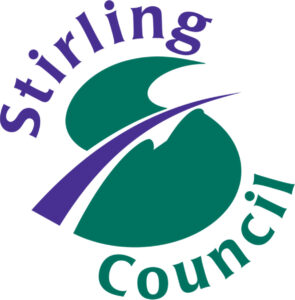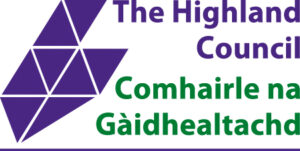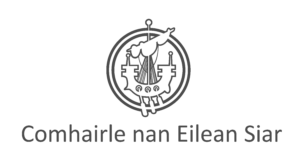Social Work Scotland Response
Introduction:
Social Work Scotland is the professional body for social work leaders, working closely with our partners to shape policy and practice, and improve the quality of justice services and the experience of those who use our services. We are committed to trauma-informed, rights-based principles and values of our profession, and therefore supportive of modernising the criminal justice processes in a way which is person-centred, efficient and effective.
The reflections within this response are drawn from consultation with our membership, many of whom, are senior managers with extensive experience in the criminal justice system.
The consultation:
This consultation covers multiple inter-related topics and you do not have to answer every question. Efforts have been made to structure the paper to make it accessible, acknowledging that some will have an interest in all the proposals while others will wish to focus on those of greatest interest or relevance to them. Some of the proposals in the paper relate to technical criminal procedure. We have sought to present the issues and the questions in an accessible way so that they are understood by everyone. A glossary is provided to explain specific terms. The paper is structured as follows and references to chapters within the questions refer to these:
Chapter One: Conduct of business by electronic means in criminal cases: documents – Question 1
Response: The provisions for chapter one should be made permanent. The caveat being that the sending organisations, have the capability and equipment to send documents with an electronic signature and appropriate encryption. The documents which would normally be sent to an individual but can now be sent to a solicitor, would be helpful in cases where a person has learning difficulties, literacy issues or other capacity issues. It should be noted also that there is digital poverty across certain groups, whereby individuals may not have smart technology or appropriate devices.
Where an individual is sentenced to a period of imprisonment, it is important that key documentation travels with them digitally, to avoid being asked similar repeated questions, once they are admitted into prison. One example of such a document is the justice social work report which contains key current circumstantial information and analysis from the assessment of risk and needs.
Chapter Two: Virtual attendance – criminal courts – Questions 2 to 3
Response: The provisions for Chapter 2 should not be made permanent. The rationale being from a SWS perspective is that, if an individual is to appear in court by virtual means, this suggests that any additional information required by the court will be provided virtually and this can be a challenge when working with vulnerable people over a digital platform. For example, provision of a bail information report in order to address the question of remand versus bail supervision. It is important to be able to engage with individuals meaningfully in custody courts, ensuring that the digital technology is not a barrier to communication. Where a person is sentenced to a period of imprisonment, then court based social work staff will endeavour to interview the individual and have a duty to pass onto SPS any concerns over mental health or suicide risk. In both scenarios mentioned above, there are pros and cons to doing so virtually. It is more challenging to assess a situation digitally, where a person may be agitated and perhaps suffering from a mental illness or addiction issues, which may alter or determine the outcome of any risk assessment. Those appearing from custody and appearing in court are a priority for justice social work (JSW). Social work is predicated on relational practice, therefore the use of digital platforms at a stressful, potential life changing time in an individual’s life, can significantly impact the ability to support the individual and assess possible interventions. There is additional concern about being unable to interview individuals with vulnerabilities, face to face, in order to do a thorough assessment, who then are released from custody following a virtual court. This may lead to risks escalating or making it more difficult to mitigate against harm being caused in some cases. Each case is unique and while a digital approach will work well for many, there is a significant number of individuals in the criminal justice system with multiple, complex needs.
Again, taking account of neurodiversity issues by the court when the proceedings are virtual can be more challenging for both the individual but also for professionals.
There is likely to be resource implications for JSW as there is not staff available in every court and it would be unusual to have staff routinely based in Police custody suites, making it more challenging to provide dedicated support services when the contact is exclusively digital. Realistically, it is more likely that a hybrid approach would be needed by social work, whereby assessments and support could be provided digitally and face to face, depending on needs and circumstances. Account needs to be taken also of the distance between custody suites and social work offices- in some cases the distance is significant. Reference is made to virtual court appearances being person-centred and trauma-informed, but unfortunately, this has not been the experience of many local authorities, when trying to complete assessments. There can be a disconnect between assessor and accused over a digital platform, making communication unreliable and inconsistent. At times, the technology can create a barrier, with the systems being switched off promptly following sentencing, leaving the individual confused and with a number of unanswered questions.
There are particular challenges for those living in remote and island communities. Where individuals are released from police custody suites outwith their home local authority area, there are likely to be difficulties in accessing public transport home, possibly, with no social work support closeby. The cost associated with travel and overnight stays in order to attend court in the mainland for those residing in rural areas is significant, therefore, virtual attendance at court could be beneficial. However, the individual requires access to reliable wi-fi and equipment which is not always available in more rural and island settings. Digital poverty is a factor for some so having access to a digital hub would be beneficial.
Chapter Three: National Jurisdiction for Callings from Custody etc. – Question 4
Response: Agree that provisions for Chapter 3 be made permanent, while taking into account some of the challenges faced by individuals, as noted above. It would make the process more flexible if Sheriffs can hear custody cases irrespective of where the individual is being held or where the alleged offence took place. Minimising the time that a person is held in custody prior to a first court appearance would be beneficial in most cases, although consideration needs to be given, as to how the person can access support prior to leaving custody, for example, accessing arrest referral service or brief alcohol intervention.
Again, the location of police custody suites can determine the relevance of this approach.
Chapter Four: Fiscal Fines – Question 5
Response: The provisions for Chapter 4 should be made permanent, with exceptions, taking into account the ability of the individual to pay and their family circumstances in the context of the current cost of living crisis. An increased fine on an individual is likely to impact the wellbeing of the whole family. There is a risk that due to financial pressures and levels of deprivation, the individual may decline to pay a fine, which may lead to a higher tariff disposal.
Chapter Five: Digital Productions – Questions 6 to 8
Response: No comment on the way in which evidence is gathered and processed.
Chapter Six: Modernisation of the Law on Copy Documents – Questions 9 to 13
Response: No comment
Chapter Seven: Further Views – Modernisation of criminal justice procedures through greater use of digital processes – Question 14
Response: it is agreed that justice processes should be modernised, taking account of appropriate sharing of information, use of digital technology and processes in order to improve outcomes and efficiency. The modernisation should take account of whether it will enhance a person-centred, trauma-informed approach. There may be situations where legislative change is required as was the case during, the pandemic, under emergency circumstances.
Chapter Eight: Impact Assessments – Questions 15 to 22 Human Rights
Response: In cases of limited capacity or individuals with neurodiversity issues, there needs to be clarity that they understand information and decisions made, especially when it is explained over a digital platform. The use of technology, while advantageous, can be a barrier to recognising people’s rights if they do not understand decisions made.
Equalities
Response: The proposed changes need to take account of protected characteristics and the fact that “offenders” as a group are often stigmatised.
Children’s Rights/UNCRC
Response: The proposed changes need to take account of policy drivers, intended to improve outcomes for children and maximise wellbeing. The use of digital platforms may be suitable for some children but confusing for others
Fairer Scotland
Response: Individuals on low incomes are likely to be in digital poverty also, with no access or limited access to equipment and other technology. Increased Fiscal Fines is also likely to present challenges not only for the individual but the whole family if the overall income is reduced due to a fine. It will be important to assess that the imposition of a fine does not take them below a liveable income.
Island Communities
Response: Account needs to be taken of distance, public transport links, geography, connectivity and digital poverty. The location of custody suites in relation to home areas as well as the cost associated with travel. Island communities experience deprivation and challenges on a scale that other areas do not face, including availability and cost of transport, and this can be magnified when travel is disrupted by adverse weather. In addition, the cost of presenting at a court in mainland Scotland can also potentially create further interruption for the individual if their case is deferred or he/she are in employment. For instance, with regards to the latter the individual may have appeared before the court, but due to a disruption in travel they are unable to return to the island, therefore impacting on their ability to return to their employment within expected timescales.
Digital poverty is a significant feature, and in conjunction with poor connectivity this creates increased inequalities. JSW teams are typically smaller and do not have capacity to be based within either the court or in police custody suites, therefore reliance on digital solutions could be equally beneficial as problematic.
Data Protection and Privacy
Response: The transmission of personal data digitally requires to be appropriately encrypted and should not be entered onto pen drives for security purposes.
Business
No Comment
Environment
Response: The increased use of digital technology rather than having significant numbers of the public travelling to and from courts is likely to be an asset to the environment.



















